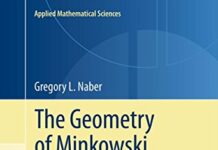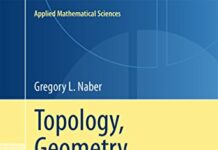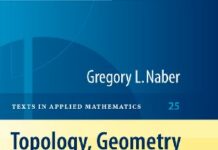
Ebook Info
- Published: 2011
- Number of pages: 432 pages
- Format: PDF
- File Size: 4.36 MB
- Authors: Gregory L. Naber
Description
A study of topology and geometry, beginning with a comprehensible account of the extraordinary and rather mysterious impact of mathematical physics, and especially gauge theory, on the study of the geometry and topology of manifolds. The focus of the book is the Yang-Mills-Higgs field and some considerable effort is expended to make clear its origin and significance in physics. Much of the mathematics developed here to study these fields is standard, but the treatment always keeps one eye on the physics and sacrifices generality in favor of clarity. The author brings readers up the level of physics and mathematics needed to conclude with a brief discussion of the Seiberg-Witten invariants. A large number of exercises are included to encourage active participation on the part of the reader.
User’s Reviews
Reviews from Amazon users which were colected at the time this book was published on the website:
⭐Let me be clear — this review is about
⭐. This concerns the second edition of the book. Consider it a “meta-review”, since others have nicely described the niche that Naber is so expertly filling. This is a “must have” book for anyone wanting to get a deep understanding of the interaction between the fields of mathematics and physics being covered. It clearly is the product of deep thought, hard work, and extensive experience. One of the very best! And that is why the flaws are so tragic. The final editing/production process led to a total disaster in the area of internal page reference numbers. This is the kind of text that makes reference to other pages in the book on nearly every page. As as far as I have seen, every single one of those page number references is incorrect! So what is supposed to be a simple reference to some previous result becomes a totally disruptive, frustrating, thought-interrupting search. To make matters even worse, the index has no page numbers, rendering it totally useless, as likewise is the case for the list of symbols used in the text.Also, this edition makes frequent references to Naber’s companion text, “Topology, Geometry and Gauge fields: Foundations”. second edition. Unfortunately, I have the first edition of “Foundations”, so I can’t attest to the accuracy of the many page references to the second edition, not that it really matters, given the already disastrous situation.Once again, the book is a “must have” if you want a thorough, accurate introduction to this very complex set of interrelated topics, but if you plan to use it in the manner in which it is intended to be used, prepare to be endlessly frustrated. What a sad turn of events! I can only hope that a third edition is in the works!
⭐
Keywords
Free Download Topology, Geometry and Gauge fields: Interactions (Applied Mathematical Sciences Book 141) 2nd Edition in PDF format
Topology, Geometry and Gauge fields: Interactions (Applied Mathematical Sciences Book 141) 2nd Edition PDF Free Download
Download Topology, Geometry and Gauge fields: Interactions (Applied Mathematical Sciences Book 141) 2nd Edition 2011 PDF Free
Topology, Geometry and Gauge fields: Interactions (Applied Mathematical Sciences Book 141) 2nd Edition 2011 PDF Free Download
Download Topology, Geometry and Gauge fields: Interactions (Applied Mathematical Sciences Book 141) 2nd Edition PDF
Free Download Ebook Topology, Geometry and Gauge fields: Interactions (Applied Mathematical Sciences Book 141) 2nd Edition



